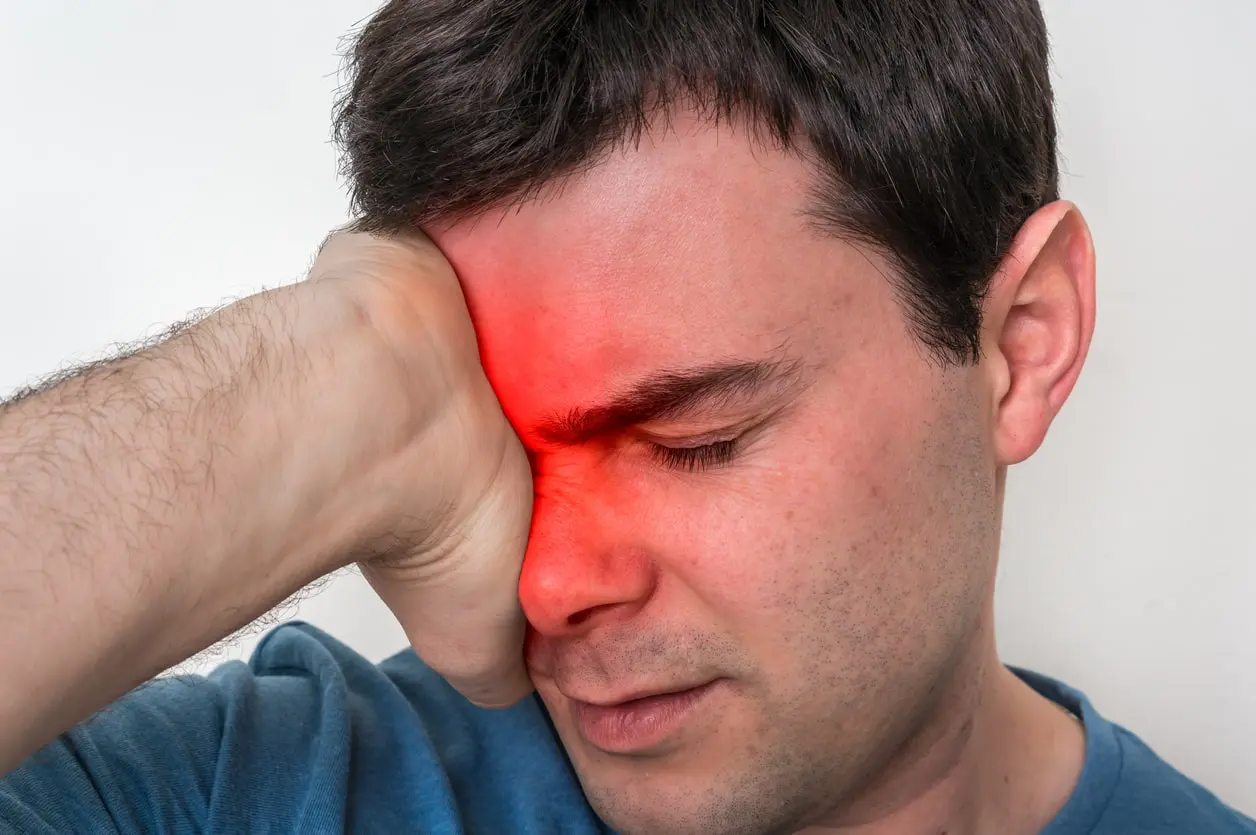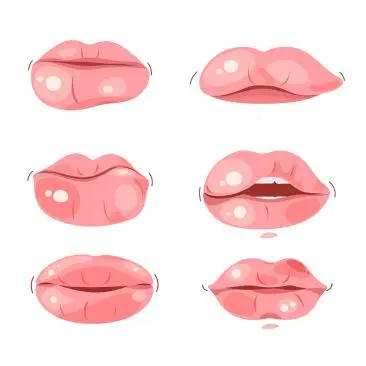What Does A Right-Sided Headache Mean?
People may experience a headache on either the left or right side of their head. Possible causes of this type of headache can include medication use, allergies, migraines, and neurological issues.
Headaches are one of the most frequently reported medical complaints among adults, with nearly half of them experiencing it in any given year.
Causes
There are several possible causes of a headache on the right side of the head:
Neurological Issues
A variety of brain issues can cause one-sided pain.
The following neurological conditions may cause one-sided headaches:
- Occipital Neuralgia: Occipital neuralgia is a condition caused by occipital nerve damage, which runs from the top of the spinal cord to the scalp. Symptoms of this condition can include sharp pain in the neck and back, pain behind the eye, and sensitivity.
- Temporal Arteritis: Temporal arteritis is when the arteries in the head and neck become inflamed. The resulting pain manifests as a severe headache, usually on one side of the head. This inflammation may also cause fatigue, muscle pain, jaw pain, and temple tenderness.
- Trigeminal Neuralgia: The brain's trigeminal nerve is damaged, leading to intense pain in the face and head, usually affecting only one side of the body at a time.
Medication Use
Taking too much of certain types of prescription or over-the-counter (OTC) medications can cause headaches. These include
- Acetaminophen (Tylenol)
- Ibuprofen (Motrin, Advil)
- Aspirin
This headache, referred to as a medication overuse headache, is the most widespread secondary headache, as stated by the Trusted Source of the World Health Organization. A secondary headache is the result of another condition.
Waking up often brings about the strongest headaches caused by overusing medication.
Other Causes
Headaches can be experienced across the entire head or just one side and can be caused by various factors.
The following are among them:
- An arteriosclerosis is a weak or bulging artery wall
- When you miss meals, your blood sugar level fluctuates
- Allergies
- Tumors
- Muscle strains or knots in the neck
- Fatigue
- Infections, including sinus infections
- Head injury
What Types Of Headaches Affect The Right Side?
In general, headaches can be divided into two categories: primary headaches and secondary headaches. Primary headaches are those where headache is the main symptom, while secondary headaches are those that occur as a symptom of another condition.
Migraines and cluster headaches are typically the source of pain on the right side of the head, while tension headaches may cause discomfort in one side of the head in specific individuals.
Migraine
It is believed that genetics are a contributing factor to migraine. Individuals suffering from migraine experience a pulsing or throbbing pain in the head, usually localized to one side. This extreme, often disabling, headache is a medical condition that requires proper diagnosis and treatment.
It is usually accompanied by severe pulsating sensations or throbbing:
- Sensitivity to sound
- Blurred vision
- Nausea
- Sensitivity to light
- Vomiting
If left untreated, people who suffer from migraines can experience visual disturbances, such as an aura, or even temporary loss of vision for up to 72 hours. The pain is usually limited to just one side of the head.
Several factors can trigger migraines, including:
- Loud noises
- Beverages and foods, such as alcohol, chocolate, cheese, and cured meats
- Emotional stress or anxiety
- Changes in weather (humidity, heat, pressure)
- Bright lights
- Skipping meals
- Hormonal changes in women
- Too much or too little sleep
- Tiredness
- Strong smells
It is important to receive treatment as soon as possible to minimize the effects of symptoms. This could involve taking over-the-counter or prescribed medications. Additionally, avoiding potential triggers and taking preventive medications may be necessary in certain situations.
Cluster Headaches
Cluster headaches are a type of headache that occurs in episodes and causes intense pain, usually concentrated around one eye. This pain can spread to other areas of the head, face, neck, and shoulders. It is rare to suffer from cluster headaches, but they can be extremely severe when they do occur.
Headache attacks commonly occur in cycles over weeks or months, followed by a period of relief from symptoms.
Cluster headaches may also cause the following symptoms:
- Red or watery eyes
- Restlessness
- Facial sweating
- Pale or flushed skin
- Swelling around the affected eye
- Stuffy or runny nose
Cluster headaches tend to occur more often in men than in women. The precise cause is not known; however, smoking, drinking alcohol, and having a family history of cluster headaches may increase the likelihood of developing cluster headaches.
Although there is no definitive cure for cluster headaches, treatments can lessen the intensity and frequency of the headaches.
Tension Headaches
In addition to tension headaches, long-term tension headaches are the most common type of headache, with up to 4% of the public population suffering from long-term tension headaches that may manifest as headaches that last for a few hours on more than 15 days each month or may come and go.
Symptoms of a headache may be present on both sides of the head, though some individuals may experience symptoms on just one side.
The following signs can be seen:
- Persistent, throbbing discomfort
- Sensitivity of the scalp
- Sore or tense muscles in the shoulders and neck
- The sensation of tightness or pressure across the forehead, sides, or rear of the head
The duration of symptoms can range from a few minutes to a few hours, and they typically have a mild to moderate intensity.
Occasionally, people who suffer from tension headaches can find relief through over-the-counter pain relievers or home remedies. However, those who experience frequent tension headaches may need to modify their lifestyle, recognize and steer clear of whatever triggers their headaches, or take prescription drugs.
When To See A Doctor
For people who suffer from frequent headaches, seeking medical attention is crucial to determining the cause of their discomfort. In many cases, a headache will go away on its own without any intervention. Therefore, seeking medical advice is key to properly addressing the issue.
If you experience any of the following symptoms along with a headache, it is essential to seek medical attention immediately:
- Numbness
- Increased pain during movement
- Head injury
- Changes in vision
- Sleep disturbances
- Slurred speech
- Rash
- Personality or cognitive changes
- Neck stiffness
- Fever
- Weakness
- Confusion
It is important for individuals experiencing severe or worsening headaches to consult a medical professional.
Tips For Quick Relief
Several headaches can be treated quickly and effectively at home by following these steps:
- Apply a warm or cold compress to the back of your neck.
- Avoid consuming trigger foods such as alcohol, caffeine, and MSG foods.
- Stay hydrated by drinking water to prevent dehydration.
- Take a short nap if needed.
- Loosen tight hairstyles, like ponytails and braids.
- Massage the tense muscles in your neck and shoulders.
- Move away from bright or flashing lights, loud noises, and strong odours.
- Improve posture to reduce muscular tension that can lead to headaches.
- Enjoy a warm bath or shower for relaxation.
- Take a break from screens, including computers, tablets, and television.
- Use over-the-counter pain relievers sparingly, as excessive use can lead to rebound headaches.
- Practice breathing exercises to alleviate pain and reduce stress and anxiety.
- Consider aromatherapy by diffusing oils like eucalyptus, lavender, or peppermint to relieve tension headaches.
Takeaway
Headaches are a common ailment, with nearly everyone experiencing them at some point.
Generally, headaches are not a severe medical issue, and the discomfort can be relieved with the help of over-the-counter medications, lifestyle modifications, and simple home remedies. Most of the time, the symptoms will disappear quickly, ranging from a few minutes to several hours.
Consult a doctor if you are experiencing severe, persistent headaches or if the headaches are getting worse. Even if it is determined that the cause of your headaches is a migraine or a cluster headache, various treatments can help reduce the intensity and frequency of the headaches.
Connect with one of our doctors at Mobi Doctor with the click of a button and receive the care you require.






